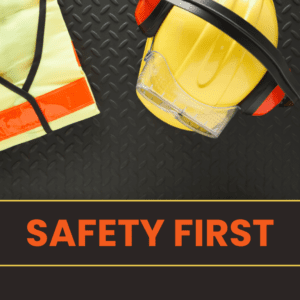Pre-Delivery Checklist: What to Do Before Arriving at the Site

Delivering goods in a safe, timely, and efficient manner requires thorough preparation. Whether you’re a logistics professional, a truck driver, or a delivery business operator, proper planning before you arrive at the delivery site can save you time, reduce stress, and help avoid common obstacles like heavy traffic, restricted parking, or disorganized loading.
A pre-delivery checklist ensures you’ve covered all the bases before hitting the road, minimizing the risk of costly delays or mistakes. This article will explore a detailed pre-delivery checklist that highlights key steps to take before reaching the delivery site. Following these guidelines will not only help you arrive on time but also make your delivery process smoother and more efficient.
Familiarize Yourself with the Neighborhood
Before you embark on your delivery, it’s essential to understand the area where the delivery site is located. Take time to review maps, street layouts, and potential obstacles like restricted zones, one-way streets, or streets that prohibit large trucks. In busy urban areas, narrow roads or roads with weight limits could make maneuvering large delivery vehicles difficult. In such cases, familiarizing yourself with truck-friendly alternative routes, such as side streets or back alleys, can be critical.
Using GPS is helpful, but do not rely solely on it, as sometimes GPS systems fail to account for road restrictions or temporary closures. Researching ahead of time allows you to be more adaptable and avoid unnecessary stress when navigating unfamiliar territories.
Look up satellite views or street-level maps of the delivery area. Mark areas where you can safely park or find designated delivery zones. Apps designed for truck drivers, such as Trucker Path or RoadHunter, can help find truck-friendly routes, rest stops, and loading zones.
Avoid Restricted Parking Areas and One-Way Streets
Parking restrictions are a significant challenge for delivery drivers, especially in congested urban centers. Cities often have zones where parking large vehicles is prohibited, or specific hours when parking or loading is permitted. To avoid fines and delays, it’s critical to identify these restrictions ahead of time.
Similarly, one-way streets can limit your ability to navigate smoothly, forcing you to take longer detours. Knowing where these areas are located helps you plan alternate routes that allow you to avoid bottlenecks and find safe parking.
If you’re making deliveries in a city or town that you frequently visit, maintain a personal log of streets that have restrictions or high traffic at certain times of the day. This log will become invaluable in future deliveries.
Contact the Delivery Site Before You Arrive
Clear communication with the delivery site is crucial. Before leaving, contact the person responsible for receiving the goods to inform them of your estimated time of arrival (ETA). This communication serves several purposes. First, it gives the recipient a heads-up so they can prepare for the delivery. Second, the delivery site may be able to provide you with specific instructions that could save you time, such as advice on when parking is more readily available or alternative routes to avoid high-traffic areas.
Additionally, confirming your ETA allows the recipient to coordinate staffing for unloading. Knowing that your delivery is on time helps them ensure that the necessary personnel and equipment, such as forklifts or hand trucks, are ready when you arrive.
Always ask for any delivery-specific instructions. Some sites might have multiple loading docks or restricted delivery windows, so it’s best to confirm any special arrangements in advance.
Leave Early if Traffic Is Heavy
Traffic congestion is an inevitable challenge in delivery operations, but careful planning can help mitigate its impact. It’s essential to leave earlier than planned if you know that your route passes through areas known for heavy traffic. By leaving early, you give yourself a buffer in case of unexpected delays, construction, or accidents.
Peak traffic hours vary by location, but generally, the busiest times are during morning and evening rush hours. If your delivery coincides with these periods, plan accordingly. Some GPS systems and navigation apps also provide real-time traffic updates, which can help you make last-minute adjustments to your route.
Use traffic apps such as Google Maps or Waze to monitor live traffic conditions. These apps can alert you to potential delays and suggest faster alternative routes.
Prepare Necessary Paperwork in Advance
Nothing is more frustrating than arriving at a delivery site and realizing that you’re missing the required paperwork. To ensure a smooth handoff, prepare all the necessary documents before you arrive. This includes invoices, delivery receipts, proof of delivery forms, and any other documentation required for your transaction. Have these documents readily available so that once you arrive, the recipient can sign off without delay.
Organize your paperwork based on the delivery sequence to streamline the process. Having all the necessary forms in order for each stop will reduce confusion and allow you to keep track of deliveries easily.
Keep a dedicated folder or digital system for each delivery and organize paperwork in a sequential manner. Consider using electronic proof of delivery (ePOD) apps for added convenience and to reduce paper clutter.
Load in Reverse: First Stop, Last In
Proper vehicle loading is essential for efficiency. If you load items haphazardly, you may find yourself rummaging through the back of your truck to locate the goods for your first delivery, wasting valuable time. The solution is to load your vehicle in reverse order: the items for your last stop should be loaded first, and the items for your first stop should be loaded last, making them the easiest to access when you arrive at each site.
This simple step saves time and reduces the hassle of digging through other packages, ensuring that each delivery is quick and organized. It also minimizes the risk of accidentally damaging goods by handling them multiple times.
Create a load plan that matches your delivery sequence. Label packages clearly, and group items that belong to the same delivery location to ensure easy access during unloading.
Stack Heavy Items on the Bottom
Proper weight distribution inside your delivery vehicle is key to maintaining balance and preventing damage to the goods. Always place the heaviest items at the bottom of the load and stack lighter items on top. This ensures stability and reduces the risk of toppling, which can lead to damaged goods or even injury.
When stacking, make sure that items are secure and won’t shift during transit. If necessary, use tie-downs or cargo straps to keep items in place. Proper stacking not only ensures the safety of the products but also makes unloading easier and faster.
Use non-slip mats or cargo nets to keep items in place, especially if you’re delivering fragile goods. Secure items tightly to avoid movement during the drive.
In the delivery industry, preparation is everything. Following a pre-delivery checklist ensures that your deliveries are safe, efficient, and free from unnecessary delays. Familiarizing yourself with the delivery site, contacting the recipient, preparing paperwork, and organizing your load properly can streamline your process and reduce potential headaches.
By taking the time to plan and execute your deliveries with care, you can enhance your efficiency, improve customer satisfaction, and maintain safety on the road. Whether you’re delivering in a busy city or a rural area, this checklist will help you stay ahead of the curve and keep your operations running smoothly.











